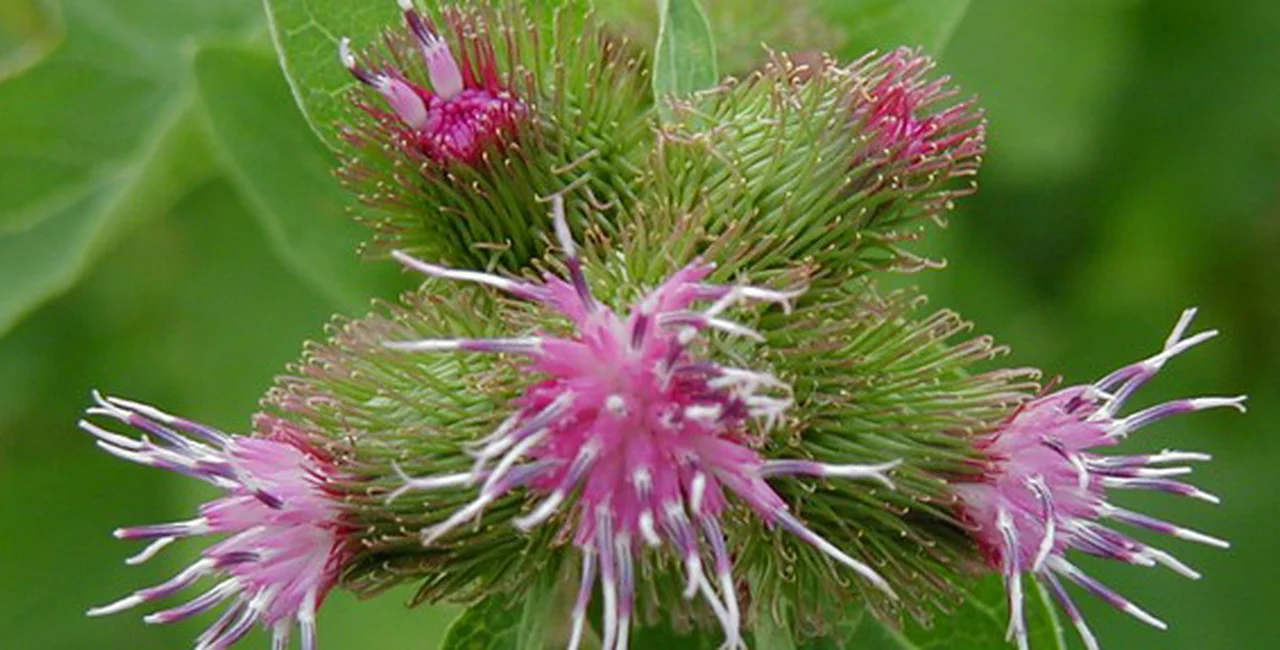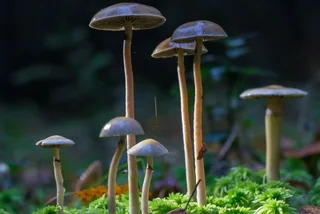The foraging tradition is strong in the Czech Republic, a country that prizes not only the magic and folklore of arcadia, but its myriad delicacies—so much so that you can set your calendar by the baskets of mushrooms accessorizing arms in early August.
Historically, field greens were collected by peasants for the jolt of nutrients they gave weak winter bodies. Today they’re packaged and sold to urban locavores at an astonishing mark-up. The warmer months are prime time for collecting tender shoots and leaves in Prague and its surrounds, especially in early spring, when meadows and fields are a salad—or sauce, stew, or soup—waiting to happen.
Slovak author and photographer Dinoyz Dugas, whose book Babkine Bylinky (“Granny’s Herbs”/Martinus 2002) is a field guide to edible nuts, berries, greens, and healing herbs coupled with homespun recipes, shared with us his recommendations for the most common—tastiest—greens the Czech Republic has to offer, as well a few tips for beginning pickers:
- Harvest from areas that you know haven’t been treated with chemicals which means away from parks and roadsides and pedestrian areas.
- Know exactly what you’re picking. Check out a few different books or sites and compare photos, just to be on the safe side. Mr. Dugas’s Web site is an excellent resource.
- Wash greens in a bowl of cold water until grit-free. You can refrigerate for up to 3 days wrapped in slightly damp paper towels inside a plastic bag
- The younger the greens, the sharper the flavor, but mature greens are best for stewing.

Bear’s Garlic
Latin: Allium ursinum
Czech: Česnek medvědí
A pungent wild garlic that’s Mr. Dugas’s favorite forest find, it’s currently out of season (the season begins in April and is relatively short). Bears and boars dig up this cousin of the chive whose garlicky fragrance tinges the air just before leaves appear on the trees. In preparation for next year, look for bear’s garlic in woodlands with deciduous trees and areas with particularly moist soil. Though it’s commonly used as a seasoning in salads, bear garlic makes a fines pesto in lieu of basil. Take care however, that you’re aware of exactly what you’re picking: Bear’s garlic is similar in appearance to poisonous Lily of the Valley.

Sorrel
Latin: Rumex acetosa
Czech: šťovík
Broad-leafed sorrel is often grown as a leafy vegetable in gardens, but arrow-leafed wild sorrel can be found growing wild in meadows. In many Eastern European kitchens the tart—often described as lemony—leaves go into a sour soup that’s stewed with spinach or potatoes and eaten hot or cold. One of the more surprising culinary uses I’ve seen for sorrel is in a sweet crisp with rhubarb, but in its basic form it adds snap to salads. Sorrel’s medicinal uses, according to Mr. Dugas, are for soothing upset stomach and colds. Watch out: When consumed in very large quantities sorrel has been known to cause illness.

Greater Plaintain
Latin: Plantago major
Czech: Jitrocel větší
Not to be confused with the banana variety that shares its name, plaintain is known as a “cosmopolitan weed” since it grows rampant alongside busy highways and byways. Its sharp aftertaste makes it best tossed with mellow greens like kale or chard. Plantain can stand in for spinach when stewed. You might also fold some wilted plaintain into a creamy risotto. Plantain has throughout the centuries been upheld as a curative for everything from nausea to blisters and, says, Mr. Dugas, can calm insect bites and ease coughs. Psyllium husk, often used in detox diets, contains plantago seeds.

Dandelion
Latin: Taraxacum officinale
Czech: Pampeliška lékařská
Hickish dandelion, that strangler of garden plants, has of late shared the spotlight with ramp, an odorous wild green onion, as fashionable foodie obsession. Dandelions that grow in rich, moist soil are tastiest; avoid the plants with flowers. Mature greens can be sautéed with garlic and onion and served like mustard greens, while young ones can go straight into salads. Some foraging enthusiasts even fry up dandelion crowns as a buttery delicacy. The healing properties of the dandelion plant are found in the root, though a wine made from the flowers was traditionally used as a general tonic. Dandelion greens are packed with vitamin A, B and C, adds Mr. Dugas.

Chicory
Latin: Cichorium intybus
Czech: Čekanka obecná
Italians like chicory which is as good a recommendation for the green as any! In the Puglia region it’s an essential ingredient to the traditional fava bean puree. Chicory abounds in fields and pastures and is recognizable by its lavender flowers. It is related to endive and radicchio and can be put to use as you would those leafy varieties either blanched and tossed in a salad or wilted and served over spaghetti with a little olive oil, Parmesan, and chili-pepper flakes. Pick the large leaves around the base of the plant and the smaller ones around the top. Mr. Dugas notes that high-fiber chicory is said to relive constipation.

Burdock
Latin: Arctium lappa
Czech: Lopuch větší
Burdock’s elephant-ear leaves start out growing low to the ground and in the later stages sprout a flower and prickly thistle. Its roots can be harvested and eaten like a root vegetable. Mature flower stalks may also be harvested in late spring, before flowers appear; their taste resembles that of the artichoke, to which the burdock is related. Burdock is a favorite ingredient in Japanese cuisine where it is shredded and braised with soy sauce, sugar, mirin, and sesame oil. The large, deep, beige taproot can be harvested from early spring to late fall. Herbalists like Mr. Dugas consider burdock leaves a natural burn treatment and in its dried form a diuretic.
For tips on where to pick greens, see our article on Prague’s green spaces.
Related article:
Fresh-Picked Prague – Strawberries












 Reading time: 4 minutes
Reading time: 4 minutes 




















